Image
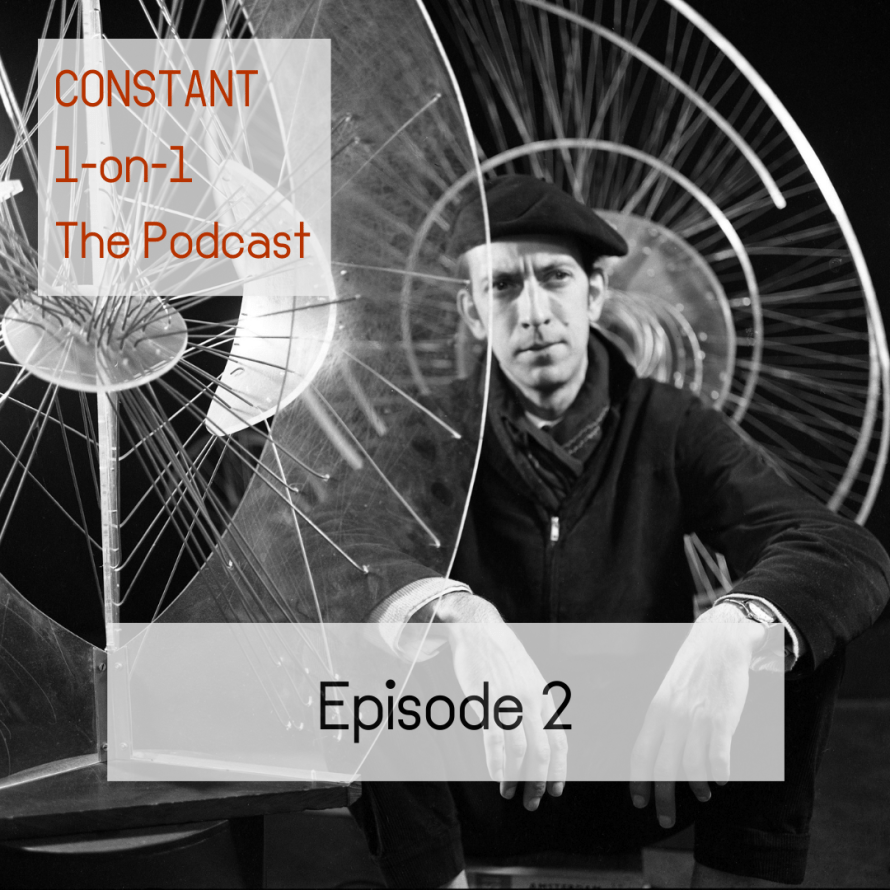
The second episode of Constant 1-on-1 The podcast is online now! This four-episode series dives into Constant’s practice as an artist, his life and the context in which he operated and built his oeuvre. Ans Boersma and Thijs van Elten dig into the archive and question friends, art historians and contemporary artists about the relevance of a legacy like Constant’s in today’s world. Listen here or find Constant 1-on-1 The podcast on Spotify or wherever you listen to podcasts.

The first episode of Constant 1-on-1, Visionary, gave an introduction to Constant development as an artist until Cobra, we leave him at the beginning of the Fifties. In episode 2, Designer, we pick up where we left off: 1952, after Cobra. Constant is looking around him a wondering how different art forms can be synthesized to have a more pronounced and positive influence on the world we live in. His quest will lead him through a labyrinth of interesting collaborations and networks and eventually to the development of New Babylon. New Babylon, Constant’s design for the world wide city of the future, was inspired by the nomadic lifestyle of the Roma and Sinti people.
In this episode of the series, we explore how it all began and what he envisioned it to look like, by speaking to the following people:
Floris Alkemade: architect and former government architect
Laura Stamps: curator of Modern and Contemporary Art at Kunstmuseum The Hague
Willemijn Stokvis: art historian and Cobra expert
Ronald Tolman: artist and friend of Constant
Ludo van Halem: curator of 20th Century Art at Rijksmuseum

Constant’s travels through Europe after the Second World War, during which he is confronted with bombarded cities and the rapid, dull urban planning of the reconstruction get him to think about how our environment personally influences us.
The idea for New Babylon is sparked in 1956 after he visits Alba, a town in Northern Italy, to attend an architectural conference. It is in Alba that he comes in contact with a community of Roma and Sinti people, whose nomadic lifestyle and musical culture are of great inspiration to him. He also sees, however, that they live under appalling conditions and are discriminated against, which motivates him to develop portable architecture that would allow them to move their home and re-settle anywhere. When he gets back home, he creates the first model: Ontwerp voor een zigeunerkamp in Alba (Design for a Gypsie Camp in Alba).
Constant works on New Babylon from 1956 till 1974.
New Babylon is a proposal for a new world for a new kind of human: one who does not have to work. Automatisation and other technology would allow its inhabitants to do whatever they like and develop themselves creatively. He designs New Babylon as a city on pillars, raised above nature and the existing cities. In 1960, Guy Debord — like Constant, a member of the Situationist International — names Constant’s project Babylon. Constant adds “New” in front of it, paralleling city names like “New York” or “New Amsterdam.”
Constant does not only make models of New Babylon, he also produced drawings, maps and temporary environments to give people an impression of what it would be like to live in his futuristic city. Stamps talks about the Ludic Stairs from 1968, for example, which Kunstmuseum Den Haag reconstructed for an exhibition about New Babylon in 2016. The stairs were originally designed for the exhibition “Weg wezen: Recreatie, vroeger, nu en straks” (Getting Away: Recreation in the Past, Present and Future”) for the Amsterdam Museum. The stairs were difficult to climb, as the steps hung from chains, making them very wobbly, and there was no clear direction or order: the only thing that was certain was that the stairs went up.
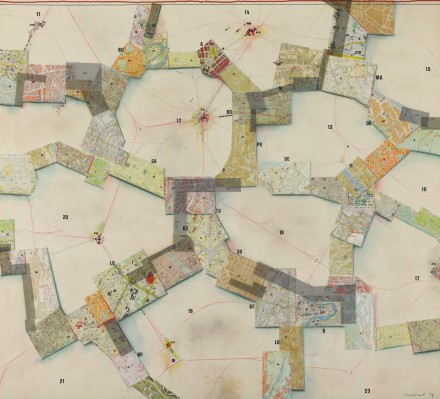

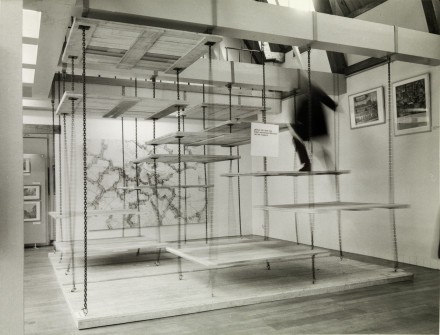
Constant calls New Babylon a labyrinth. In his own words (translated from Dutch): “In New Babylon, there are no houses, by the way. The whole city is a huge, immense, covered, collective home. A home with countless rooms, halls, corridors, in which one can wander for days, weeks. In which one also finds living elements everywhere in which to retreat. New Babylon is a labyrinth, inexhaustible in variety, a palace with a thousand chambers.”
Labyrinths are a prominent motif in Constant’s New Babylon works. Floris Alkemade sees Constant’s labyrinth as a metaphor for the changebility of life and how you can approach that with playfulness instead of fear.
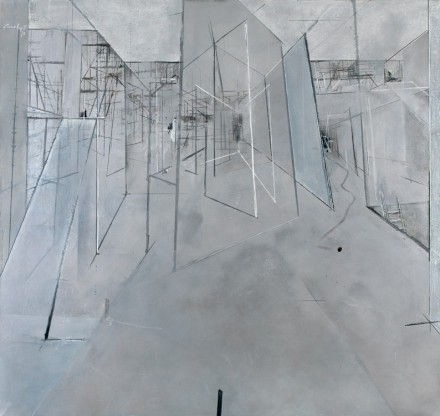
In the virtual reality project Enter New Babylon, which ran at different locations in 2021-2022, visitors could experience what life in New Babylon might be like. Young writers and designers worked together to create four different VR worlds. Enter New Babylon was a co-production of Fondation Constant, Over het IJ Producties, Hogeschool voor de Kunsten Utrecht, Poetry Circle Nowhere and Feikes Huis.

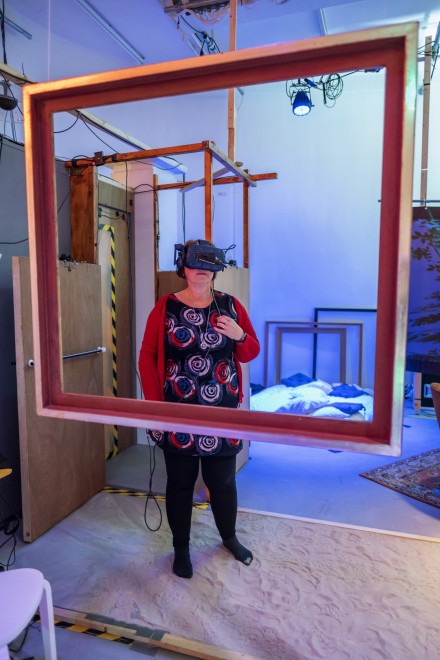
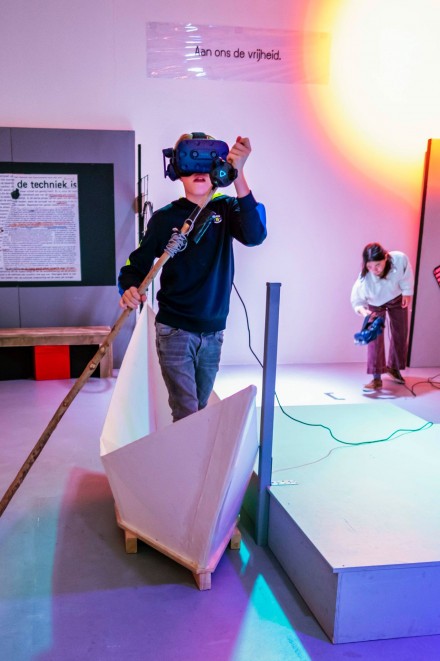
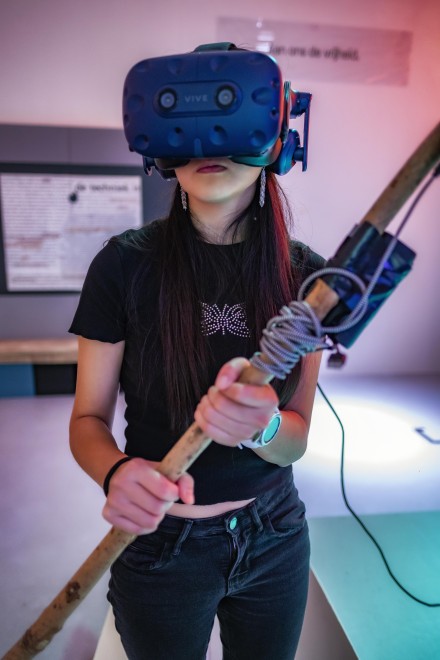
Remarkably, almost everything from the New Babylon project has been preserved. Most of it is housed at Kunstmuseum Den Haag, where in 1974 at the end of the project, there was a large exhibition about New Babylon. Read more about the 1974 New Babylon exhibition at Kunstmuseum Den Haag and other New Babylon exhibitions before and after it on the Constant 101 website here.
Ludo van Halem is intrigued by the paintings in Constant’s New Babylon project. At the end of the 1960’s, Constant started a series of paintings which feature the architecture of New Babylon. He makes use of a broad and vibrant colour palette — including silver, for which he uses aluminium paint (see Labyrinth, 1972) — and paints undefined, labyrinthine spaces with shadow-like figures and ladders. While portraying a vision of the future, the paintings are also very much about the art of painting itself and materiality. He was innovative in his method of painting; a new technique he used in several of his New Babylon paintings was spray painting over perforated plates, using them as a kind of stencil to create shadowy grid elements. Constant had also used these perforated plates in his models for New Babylon.
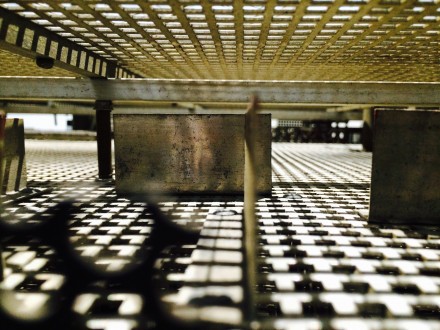

After finishing his New Babylon project, Constant turns to a very classical form of painting. These paintings have a strong literary orientation and complex subjects matters.
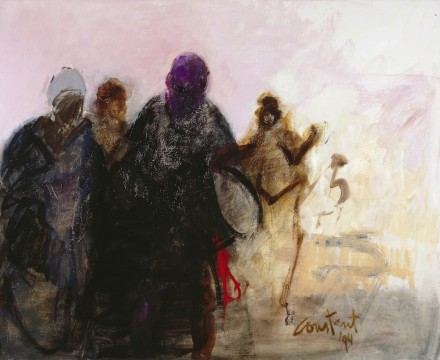
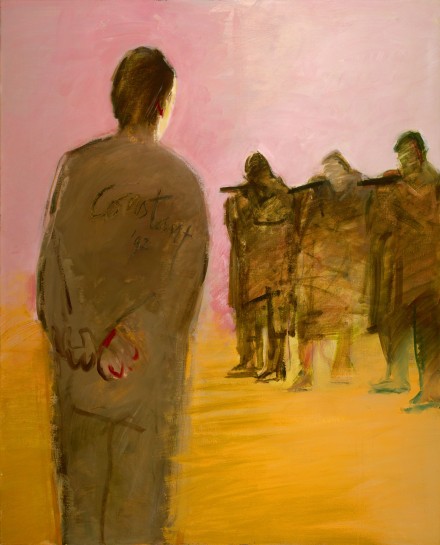
The next episode, is about the Homo Ludens, or Playing Man. Was Constant himself a Homo Ludens? An episode about his art practice, personality and making music. Episode 3, Playing Man, will be released soon.
Constant 1-on-1 The podcast is a production of Fondation Constant and was made by Ans Boersma and Thijs van Elten.
Content editing: Kim van der Horst, Thijs van Elten and Ans Boersma.
Fact checking: Mia Lodder and Kim van der Horst.
Music: Freek Dijkstra
Music performance: NEEF. with guest musicians Madelief Lammers, Tomás Gomes, Mozes Schrijvers and PEER.
Leader: Aafke Romeijn.
Editing: Ed Spil and Thijs van Elten.
Sound fragments: Television broadcast “Met Simon Vinkenoog naar het New Babylon van Constant” (1962) — VPRO
VR-Installation “Enter New Babylon” (2021)
Amsterdams Fonds voor de Kunst, Fentener van Vlissingen, Gifted Art, Iona Stichting